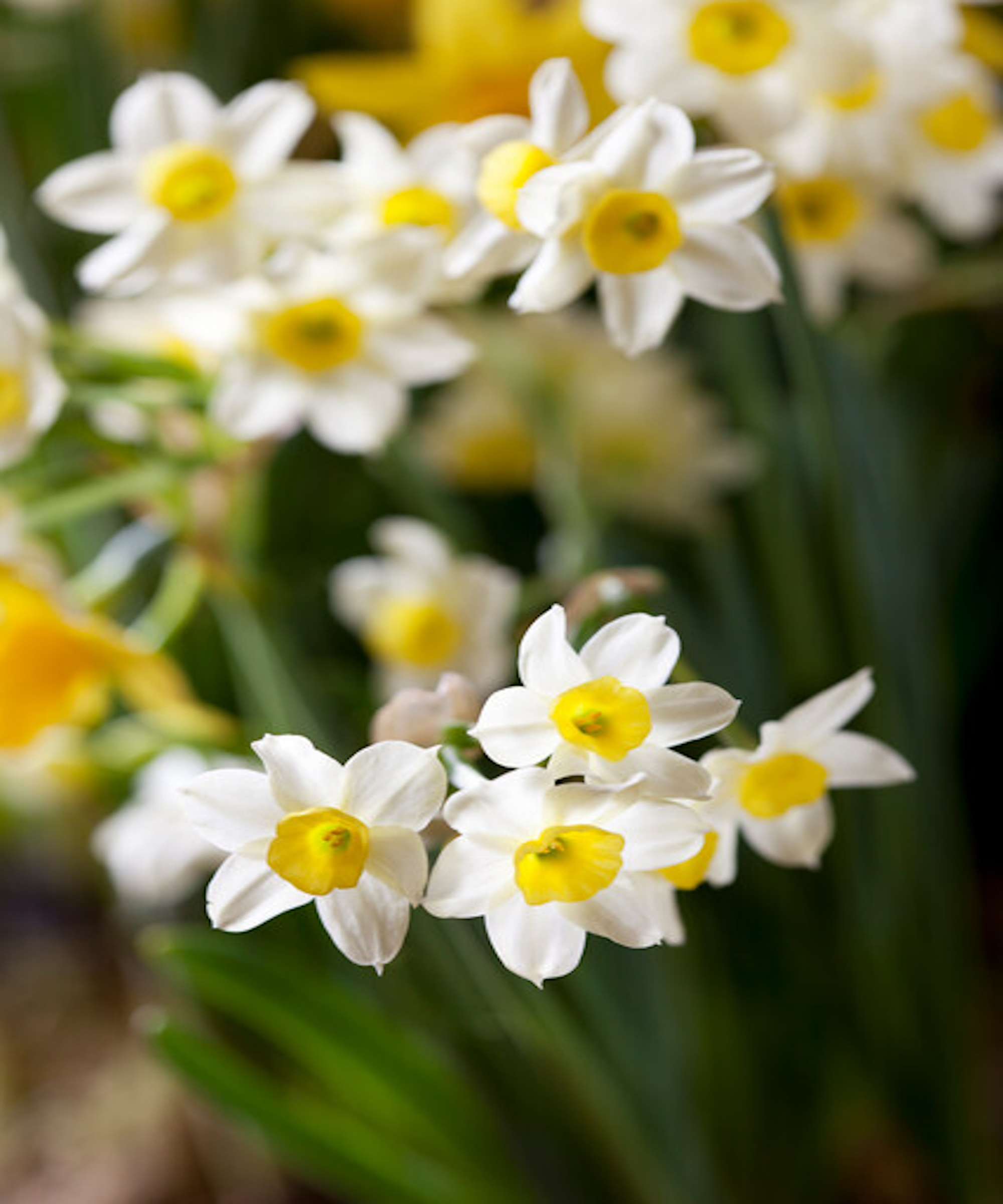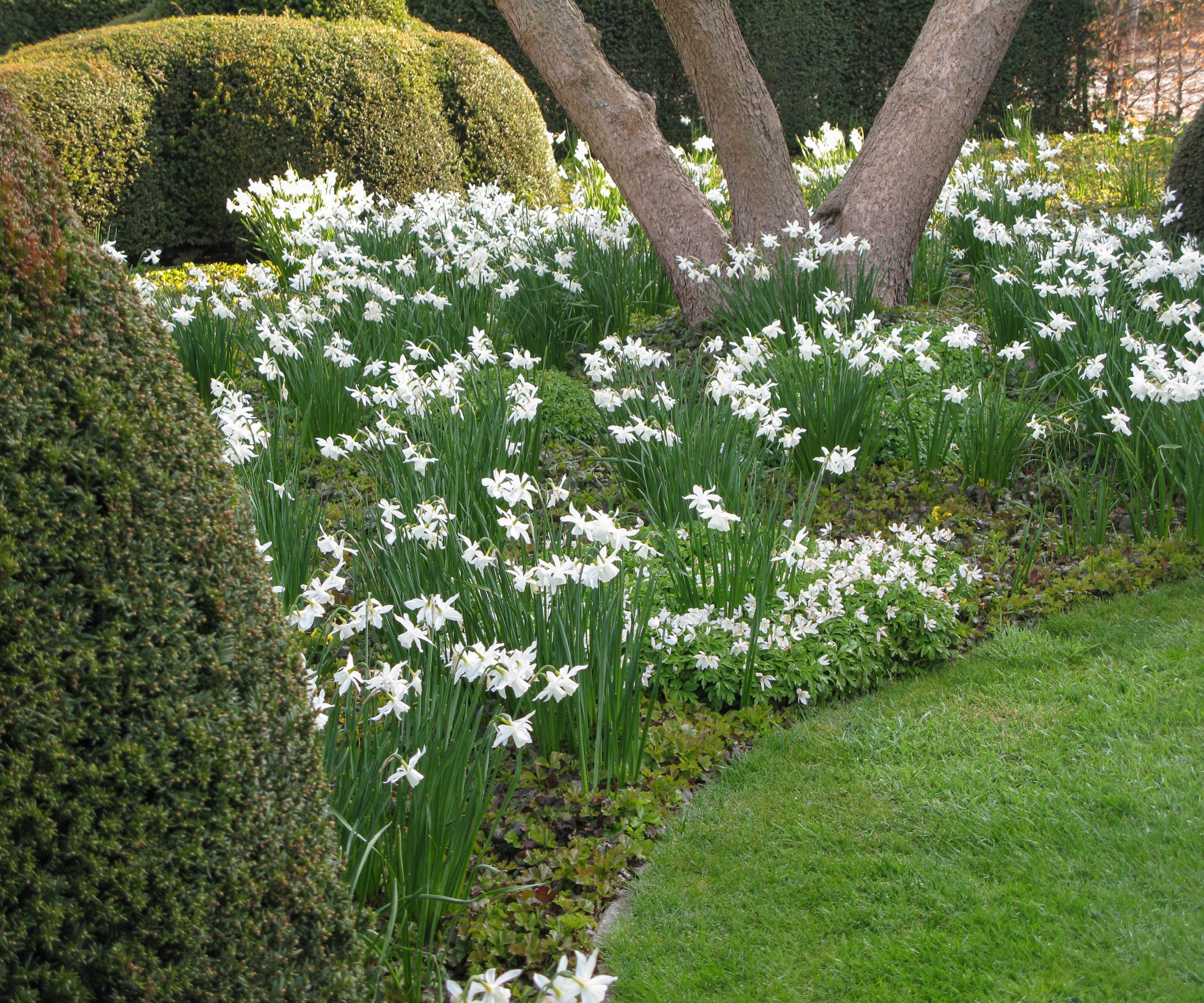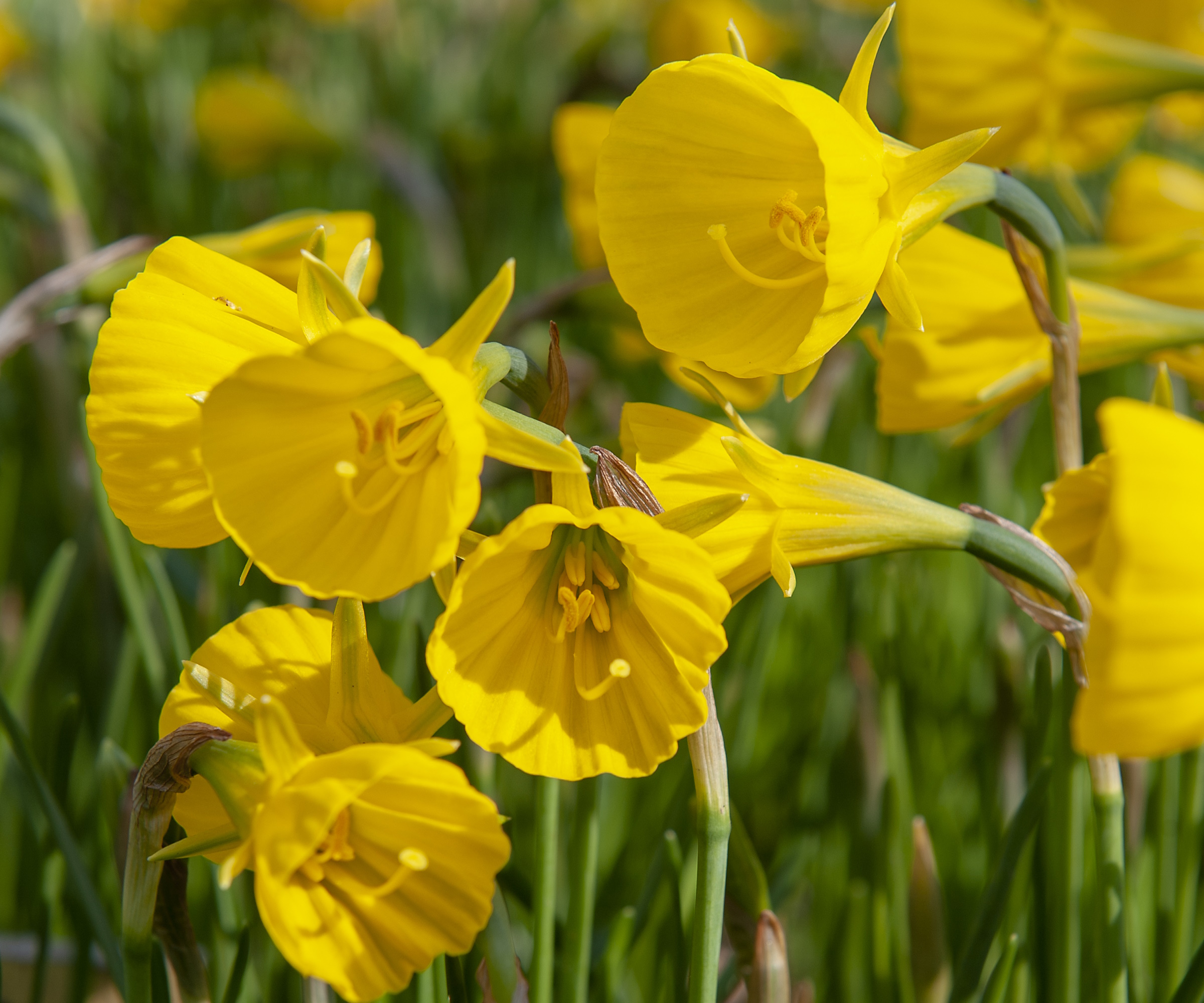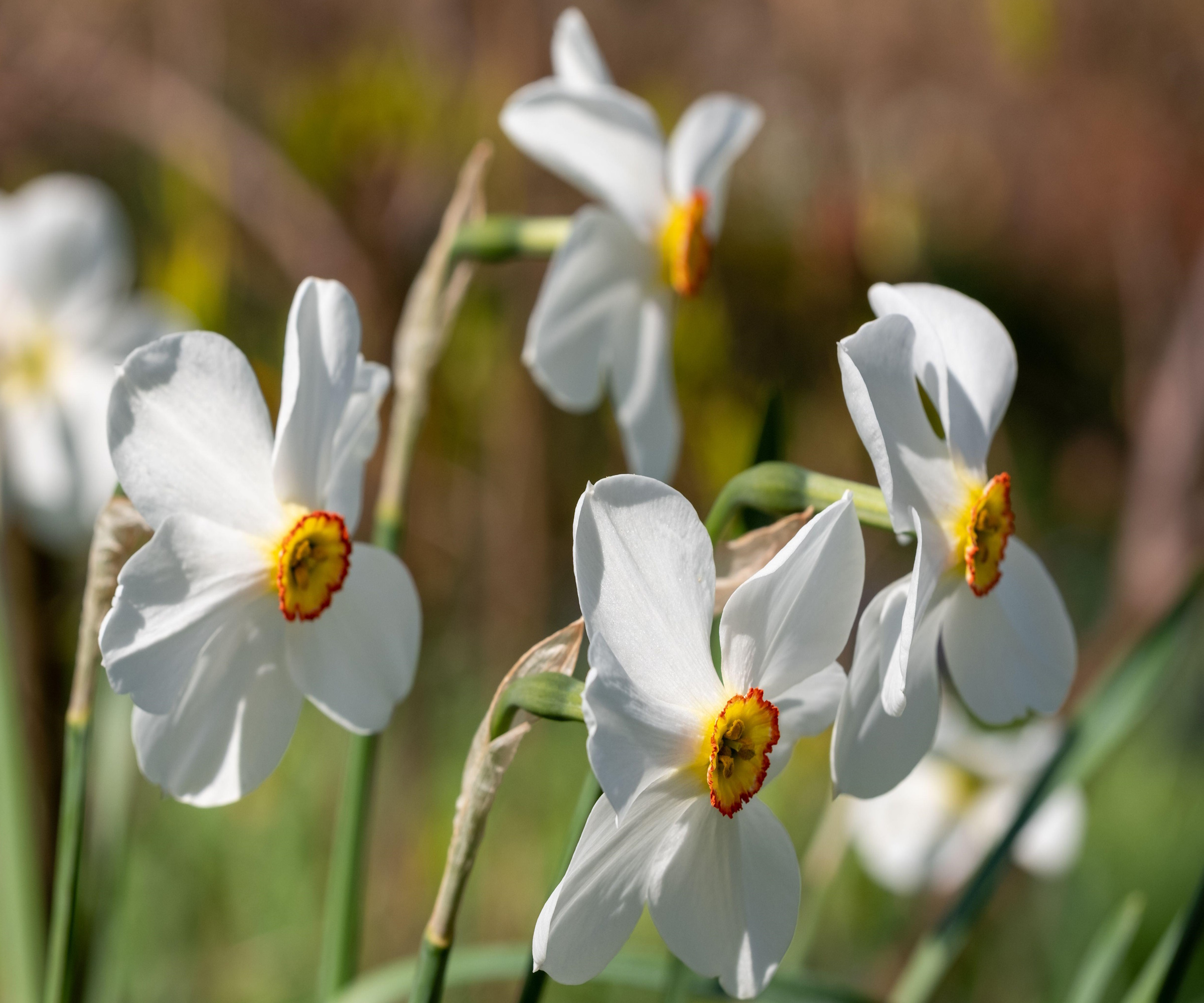
Narcissus are true heralds of spring. A glimpse of their cheery yellow trumpets is enough to raise our spirits but there’s a vast array of flower types to choose from.
Blooming proudly from early February to the end of May, there are over 26,000 cultivars on offer, each with their own charm and characteristics.
Available in every shade from bold, sunshine yellow to the palest cream and apricot, plus endless forms with single or multi-stemmed blooms, it’s hard to resist topping up your daffodil bulb collection each fall.
We've curated eight of the best varieties to brighten up your plot.

Most popular types of narcissi explained
With hundreds of varieties on offer, narcissus can bring a touch of cheer to every part of the yard. From naturalizing under trees, shrubs and in the lawn to filling pots and window boxes with glimmers of gold, these springtime beauties come in every shape and size.
There are also numerous varieties with quirky flowers that may not instantly bear a resemblance to those classic trumpet-shaped blooms, but that doesn’t mean that they’re not worth growing.
Showcased in a prize container, nestled within a rock garden or proudly displayed on a tabletop, they all have their own distinct beauty.
Small cupped narcissi

Some of the most enchanting blooms belong to the small-cupped Narcissus. Flowering in mid spring, they have some of the more unusual and bi-coloured cultivars – often featuring pale almond-white petals surrounding a strongly-colored central cup.
With a single flower on a straight stem, around 14-16 inches (30-35cm) tall, these are brilliant garden all-rounders adding a cheery splash of color to pots, the front of borders, lawns, under deciduous trees and shrubs.
With so many varied color combinations to choose from, it's well worth opting for a mix of new introductions along with tried and trusted old favorites.
Popular since being introduced in 1945, Narcissus ‘Barrett Browning’ has been highly coveted. Its bold, slightly frilled, orange-scarlet cup shines out against the pure white petals and will grace pots, borders and lawns with its striking looks every March to April.
Narcissus tazetta

Instantly recognisable for their small multiple blooms on a single stem plus their deliciously sweet fragrance, tazetta narcissus include some of the most popular varieties. With wide open flowers and a shallow cup, they have something of a delicate appearance but that doesn’t mean that they should be confined to pots and indoor displays.
Narcissus tazetta naturalize easily and work well in rock gardens. Some of our favorite Narcissus tazetta varieties are Narcissus ‘Geranium’, Narcissus ‘Grand Soleil d’Or’, Narcissus ‘Minnow’ and Narcissus ‘Ziva’ or paperwhites.”
Hardy in US zones 5-9 they tend to favor climates with wet winter months but dry, hot summers. Depending on the variety they can have anywhere from 3-20 blooms on a single stem and make great cut flowers.
Narcissus triandrus

Also known as 'angel tears' daffodils, these miniature blooms have a distinct and elegant beauty.
'The outer petals tend to sweep back from the cup that angle downward creating a really unique feature,' says bulb expert Katie Sunderlage. 'These types tend to also be very fragrant making them perfect for a cut flower bouquet.'
Producing 2-3 small flowers per stalk in mid to late spring, they are perfect for planting in rock gardens, under deciduous trees and shrubs and in larger beds, allowing them to naturalize.
'These are one of my favorite types because of their unique bloom and delicate features,' says Katie. 'Since they have more delicate flowers, we do recommend planting them in groups of six or more to create a more full, bouquet effect in the garden.'
Varieties to look out for include Narcissus ‘Ice Wings’, Narcissus ‘Silver Chimes’ and Narcissus ‘Hawera’, but bulb expert Megan Foster says: 'One of our favorites, Thalia falls into this division with its classic crisp white nodding flower heads with little wings flying out back behind the cup – a darling bloom.'
Narcissus Bulbocodium

This plants alternative name – hooped petticoat daffodil – aptly describes its unusual shape. With an exaggerated flared trumpet backed by shorter spur-like petals, it’s a real head-turner and deserves to be grown more widely.
A dwarf bulb reaching to just 3 inches (15cm), it looks stunning planted in large numbers either in a wildflower meadow, sweeping through borders or in clustered scree areas as part of a rock garden. Flowering from March to April, they are happiest planted in partial shade or full sun.
There are a few cultivars to choose from with colors ranging from pure white, vanilla through to sunshine yellow. 'We love Golden Bells – with its charming little conical cups - and use it in some of our stinzenplanten collections for planting into your lawn,' says Megan Foster.
Cyclamen-flowered daffodil

Native to Spain and Portugal, these miniature daffodils are a real mixed bunch. With reflexed petals and an elongated trumpet – often in a contrasting color – they will bring some drama to the spring garden.
One star of the cyclamineus group is Narcissus ‘Tete-a-Tete’.
'It has been around since before the 1950s and won many awards,' says horticultural and bulb expert Peggy Anne Montgomery. 'It’s very early blooming and flowers for an extended period with bright recurving petals. Just 6-8” (15-20cm) tall means they won’t topple over from spring storms and wind.'
Ideal for underplanting deciduous shrubs and roses, they will brighten up the dullest of corners. A prolific and vigorous bulb, they will happily spread year after year, but like most, they do detest sitting in wet soil.
Split corona daffodils

Surely the divas of the spring garden, these showy blooms are mesmerizing. Officially classified as split corona daffodils, these are also called butterfly, orchid, or hibiscus daffodils.
'I don’t plant these for my pollinator friends; I plant these beauties for my own delight,' says Peggy Anne. 'The large, frilly blossoms come in many different colors: every shade of yellow to nearly white, orange, and pink. I dare you to pick just one variety. They are perennial, and while they may not multiply as quickly as the miniatures, they bulk up fairly quickly.'
Great for filling pots and raised borders, they really pay to be raised up and viewed at a height so you can admire the infinite and complex ruffles.
Narcissus poeticus

Known as 'the poet's daffodil', this is a very select group of heirloom narcissus. With flat open petals and a central short contrasting cup they have a beguiling beauty and rather wild look.
Two named blooms Actaea and Old Pheasant’s Eye are particularly popular and have an important backstory.
Peggy Anne Montgomery explains: 'I love the history of these flowers as much as the delicate blooms. Carl Linnaeus described this daffodil in 1753. It was one of the first daffodils to be cultivated and is often called the daffodil of ancient times. It is also associated with the Greek legend of Narcissus.'
Fragrant and with a single bloom on top of a tall, straight stem they are perfect for cutting, planting amongst long grass meadow-style and bringing color to woodland areas. They also cope more successfully than other bulbs with wet, slow to drain areas.
FAQs
Which narcissus are the best for planting in a lawn?
The bulbs that tend to be the happiest planted in a lawn are simple, robust and on the short side. This helps them withstand the frequently exposed conditions and also ensures that they stand out amongst - and not above - the longer blades of grass.
‘Drift planting is desirable in almost every situation,’ explains horticultural and bulb expert Peggy Anne Montgomery. ‘It mimics nature, and the repetition is soothing to the eye. Bulbs always look better when planted en masse. The flowers can be small, so it takes quite a few of the small ones to show up.’
Popular choices for naturalizing include: Narcissus 'Jetfire'; Narcissus 'Toto'; Narcissus 'Hawera' ; Narcissus bulbocodium; Narcissus Poeticus Actaea.
If you are inspired to plant more narcissus and spring flowering bulbs in your yard, we have plenty of handy guides to get you started. Find out 10 of the best bulbs you can grow and how to plant them.







